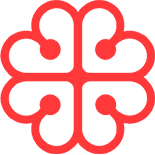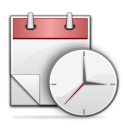Discover the rich history and heritage of North America’s largest
French-speaking city.
Some archaeological evidence demonstrate
that various nomadic First Nations native people occupied the island of Montreal for at least 2,000 years before
the arrival of Europeans.
The French explorer Jacques Cartier visited Hochelaga on October 2, 1535, and estimated the
population of the native people at Hochelaga to be "over a thousand". Explorer Jacques Cartier named the mountain
in 1535, and geographer Battista Ramusio, who was the first to place Montreal on a map in 1556,
translated the name into his native Italian (at that time the most widely understood of all of Europe’s languages)
as “Monte Reale.”
Montreal takes its name from Mount Royal, which is located in the center of the island.
Seventy years later, French explorer Samuel de Champlain reported that the
St. Lawrence Iroquoians and their settlements had disappeared altogether from the St. Lawrence valley, possibly due
to outmigration, epidemic of European diseases, or wars.
In 1639, Jerome Le Royer de La Dauversiere obtained the Seigneurial title to the Island of Montreal in the name of
the Societe de Notre-Dame de Montreal to establish a Roman Catholic mission for evangelizing natives. Paul Chomedey
de Maisonneuve was the governor of the colony, which was established on 17 May 1642.
 |
Ville-Marie became a centre for the fur trade and a base for
further French exploration in North America. By the early 18th century, the Sulpician Order was
established there.
To encourage French settlement, they wanted the Mohawk to move away from the fur trading post at
Ville-Marie. Montreal was incorporated as a city in 1832. By 1860, it was the largest city
in British North America and the undisputed economic and cultural centre of Canada.
Montreal was the capital of the Province of Canada from 1844 to 1849, but lost its status when a
Tory mob burnt down the Parliament building to protest the passage of the Rebellion Losses
Bill.
|
|
After World War I, the Prohibition movement in the United
States turned Montreal into a haven for Americans looking for alcohol. Unemployment remained high
in the city, and was exacerbated by the Stock Market Crash of 1929 and the Great Depression.
The Saint Lawrence Seaway opened in 1959, allowing vessels to bypass Montreal. In
time this development led to the end of the city's economic dominance.
However, the 1960s saw continued growth, including Expo 67, the construction of Canada's tallest
skyscrapers, new expressways and the Montreal Metro system.
|
 |
 |
By 1951, Montreal's population had surpassed one million
people. The 1970s ushered in a period of wide-ranging social and political changes,
stemming in large part from the concerns of the French-speaking majority about the conservation of
their culture and language, given the traditional predominance of the English-Canadian minority in
the business arena.
The October Crisis and the 1976 election of the Parti Quebecois, supporting sovereign status for
Quebec, resulted in the departure of many businesses and people from the city. In 1976, Montreal was the host of the Olympic Games. By the late 1990s,
Montreal's economic climate had improved, as new firms and institutions began to fill the traditional
business and financial niches. The 21st century has brought with it a revival of the city's economic
and cultural landscape |
 About
Montreal About
Montreal  Montreal City
Directory Montreal City
Directory  City
Events City
Events
|



